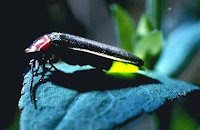 Nothing says summer like butterflies drifting lazily across a meadow. And just like fireflies use their flash to attract mates (see entry below), butterflies call to each other with their loud exuberant colors—the tiger swallowtail’s bright yellow, for example, calling other swallowtails.
Nothing says summer like butterflies drifting lazily across a meadow. And just like fireflies use their flash to attract mates (see entry below), butterflies call to each other with their loud exuberant colors—the tiger swallowtail’s bright yellow, for example, calling other swallowtails.They are flying billboards, advertising—what else?—sex.
While we all love butterflies, too few people realize you can actually GROW butterflies. Yes, grow them. If you plant the flowers their caterpillars crave and nectar-rich flowers the adults need, you can nurture larger numbers of butterflies.
Take milkweed, for example. Monarch butterflies—those big orange dudes—only lay eggs on milkweeds, as the caterpillars eat this, and nothing else. The caterpillar incorporates noxious milkweed poisons into its chemistry, transforming into adults that use their bright orange to advertise their distastefulness.
Milkweeds also produce stunning nectar-infused flowers that butterflies find irresistible. So put milkweed in your garden, and you’ll grow Monarch butterflies while offering nectar for dozens of varieties of butterflies and skippers, their smaller cousins.
Grow dill or fennel, and black swallowtails will lay eggs in your garden. Hollyhocks host painted ladies and gray hairstreaks. Violets support members of the fritillary clan, a diverse group of stunning fliers. The pipevine swallowtail’s caterpillar lives on, you guessed it, pipevine and Dutchman’s pipe; the spring azure—a dainty powder-blue beauty—craves Spirea and viburnums, and so it goes. For a long list of host plants, try here or here.
So far, however, it’s been a thin butterfly summer—I’ve only seen only two Monarchs so far, and precious few swallowtails. To understand butterfly populations, the North American Butterfly Association leads July 4th counts of butterflies nationwide. Join me on my count—I’d love to welcome you.
And grow butterflies. Plant dill and milkweed to start, and see where it goes. Enjoy.





